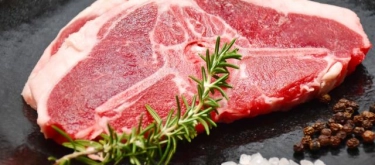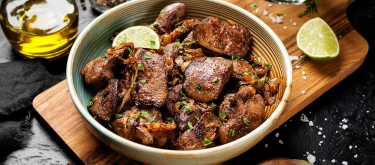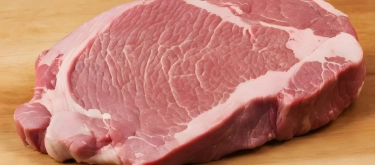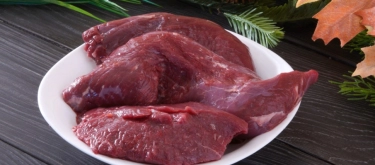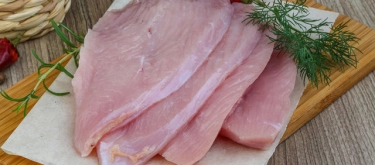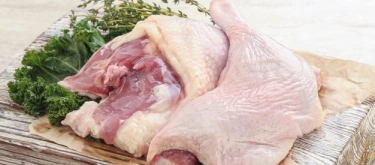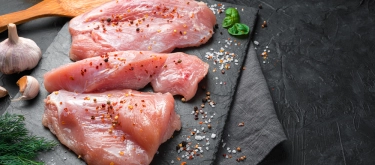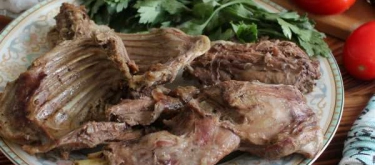Beef Heart: Taste Profile, Aroma, Benefits and Health Risks
Beef heart, a nutrient-dense organ meat, has been valued for centuries in culinary traditions around the globe. Particularly prominent in South American, European, and Asian cuisines, beef heart is prized for its robust flavor, dense nutritional profile, and versatility in cooking. Its recent resurgence among chefs and nutrition enthusiasts highlights its culinary adaptability—from grilled skewers and stews to gourmet dishes—promoting sustainable eating practices through nose-to-tail cooking.
Beef heart is an organ meat derived from cattle, thus unsuitable for vegetarians and vegans. It is naturally gluten-free and low in carbohydrates. Always ensure beef heart is thoroughly cooked to eliminate foodborne illnesses.
What does Beef Heart taste like?
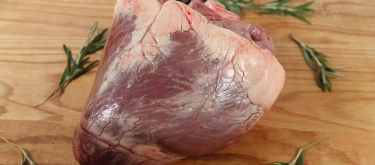
Complete Sensory Description
Taste:
Beef heart has a bold, intensely savory taste, closely resembling lean steak but with deeper, richer, more mineral-like undertones. Its distinctly hearty, beefy flavor pairs excellently with bold seasonings and cooking methods like grilling or roasting.
Aroma:
Fresh beef heart has a clean, faintly metallic or mineral aroma. When cooked, it develops rich, savory fragrances reminiscent of roasted meat with subtle caramelization and earthy notes.
Texture:
Unlike most organ meats, beef heart has a firm yet tender, dense, steak-like texture. Properly cooked, it becomes pleasantly chewy yet tender, offering a satisfying bite.
Appearance:
Raw beef heart is deep red, dense, and muscular, resembling lean steak. Cooked beef heart takes on a dark-brown appearance, with a slightly firm yet tender texture when properly prepared.
Varieties and Culinary Influence
-
Whole Beef Heart:
Typically cleaned, trimmed, and prepared for roasting, grilling, or slow cooking. Ideal for large preparations and slicing after cooking. -
Sliced or Cubed Beef Heart:
Suitable for quicker cooking methods like stir-frying, grilling (anticuchos), or stewing.
In-depth Flavor Analysis
-
Deep Savory (Umami):
Beef heart provides intense, satisfying umami notes, deeply savory, complemented by subtle earthy, mineral nuances. -
Mineral and Iron-rich Flavors:
The organ’s high iron content imparts slight metallic undertones, making beef heart distinctively flavorful and nutritionally rich. -
Flavor Enhancement through Cooking:
Grilling, roasting, or pan-searing enhances beef heart’s natural savory depth and caramelized complexity, creating richer flavor dimensions. -
Flavor Evolution:
Proper cooking significantly transforms the flavor—intensifying savory qualities, softening mineral notes, and yielding tender, satisfying texture.
Culinary Applications
-
Grilled and Skewered (Anticuchos):
A traditional South American preparation where marinated beef heart is grilled on skewers, achieving flavorful tenderness. -
Roasted or Braised:
Beef heart responds well to slow roasting or braising, becoming tender, savory, and deliciously rich. -
Sautéed and Stir-fried:
Thinly sliced heart sautéed quickly with garlic, onions, peppers, or spices for nutritious, flavorful dishes. -
Ground Beef Heart:
Incorporated into sausages, ground beef blends, meatballs, or burgers for added nutrition and unique flavors.
Selection and Storage
Selecting Quality Beef Heart:
- Choose beef heart with deep red color, firm texture, moist appearance, and minimal fat or connective tissue.
- Avoid hearts with excessive liquid, strong odors, or discoloration, indicating potential spoilage.
Storage Recommendations:
- Store fresh beef heart refrigerated at temperatures below 4°C (39°F) and consume within 1–2 days.
- For extended storage, freeze beef heart tightly wrapped; consume frozen within 6–9 months for best quality.

Nutritional Insights
-
Protein-rich:
Exceptional source of high-quality protein, essential amino acids, and muscle-building nutrients. -
High in Iron and Minerals:
Excellent dietary source of bioavailable heme iron, beneficial for preventing anemia, supporting oxygen transport, and boosting energy. -
Rich in Vitamins:
Provides significant amounts of vitamin B12, essential for neurological health, energy metabolism, and red blood cell production. -
Low Fat, Lean Protein:
Beef heart is lower in fat compared to other beef cuts, offering leaner, nutritious meat suitable for health-conscious diets.
Expert Insights & Culinary Tips
-
Preparation Advice:
Culinary experts recommend removing excess connective tissue, marinating beef heart briefly (1–4 hours) with acidic marinades (vinegar, citrus) or bold seasonings (garlic, cumin, herbs) to enhance tenderness and reduce mineral intensity. -
Optimal Cooking Techniques:
Quick, high-heat methods (grilling, pan-frying) or slow-cooking methods (braising, stewing) yield best textures, preserving tenderness and rich flavor. -
Flavor Pairings:
Combine beef heart with robust flavors, such as garlic, chili, cumin, oregano, thyme, smoked paprika, or citrus, enhancing its natural savory qualities.
Interesting and Curious Facts
- Beef heart consumption dates back thousands of years, highly valued historically for its nutritional density and culinary versatility.
- Anticuchos—traditional grilled beef heart skewers—are a beloved street food in Peru, now globally popular.
- Beef heart is seeing renewed popularity as part of the nose-to-tail cooking movement, highlighting sustainability and culinary creativity.
How to Enjoy Beef Heart
- Grill marinated slices (anticuchos) served with tangy sauces or spicy salsa.
- Slice thinly and quickly sauté with vegetables and spices for stir-fried dishes.
- Braise slowly with onions, herbs, wine, and mushrooms for hearty stews or comfort meals.
- Blend cooked beef heart into meat mixtures, burgers, or sausages for added nutritional richness.
Harm and Dietary Considerations
-
Cooking Thoroughness Required:
To prevent foodborne illnesses, beef heart must be cooked thoroughly, achieving safe internal temperatures (at least 71°C /160°F). -
High Cholesterol:
Beef heart is relatively high in dietary cholesterol; moderation is advised, especially for individuals managing cardiovascular health. -
Iron Levels:
High iron content is beneficial for most people, but individuals with iron overload conditions (hemochromatosis) should consume beef heart in moderation.
Final Thoughts & Sensory Journey
Beef heart offers an exceptional sensory experience—distinctively savory, richly flavorful, and remarkably nutritious. Whether grilled, roasted, or slow-cooked, beef heart provides not only culinary delight but also a deep connection to traditional, sustainable cooking practices, ensuring each bite is both flavorful and meaningful.
Resources
- McGee, H. (2004). On Food and Cooking: The Science and Lore of the Kitchen. Scribner.
- USDA FoodData Central (2023). Beef Organ Meats: Nutritional Information & Safe Handling Guidelines.
- Food and Agriculture Organization (FAO). (2021). Traditional Organ Meats: Nutritional Value and Culinary Use.
